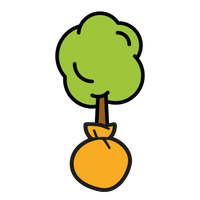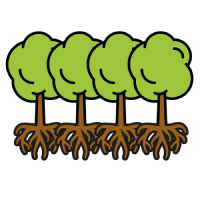We've dedicated time and care into growing your pot grown plant, so it arrives looking stunningly new and healthy.
Being a semi-evergreen, the Cotoneaster simonsii will retain its leaves in mild winters, but you cannot be so sure in colder and harsher winters. Besides this, it is an upright hedge, boasting little, deep-green leaves (looking quite dense), in which some may turn a bright red during Autumn, and are followed by delicate pink-white flowers around June (which the bees love!). The flowers are then stringed along with large, bright berries in the autumn- which the plant is most known for.
You can leave it to grow on its own into a beautiful hedge, or you can put it alongside the Cotoneaster Franchetii that has bright orange berries, for example, which will add year-round interest and pop of colours to your garden. It is the ideal hedge if you are looking for a stunning wall cover, too.
As the Cotoneaster simonsii originates from the Himalayas, it can tolerate very cold weather and will retain pretty much all its leaves in all but the harshest winters.












